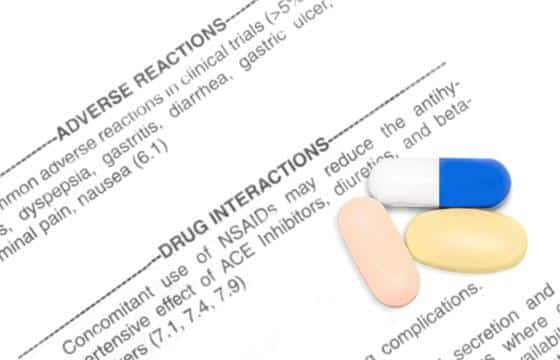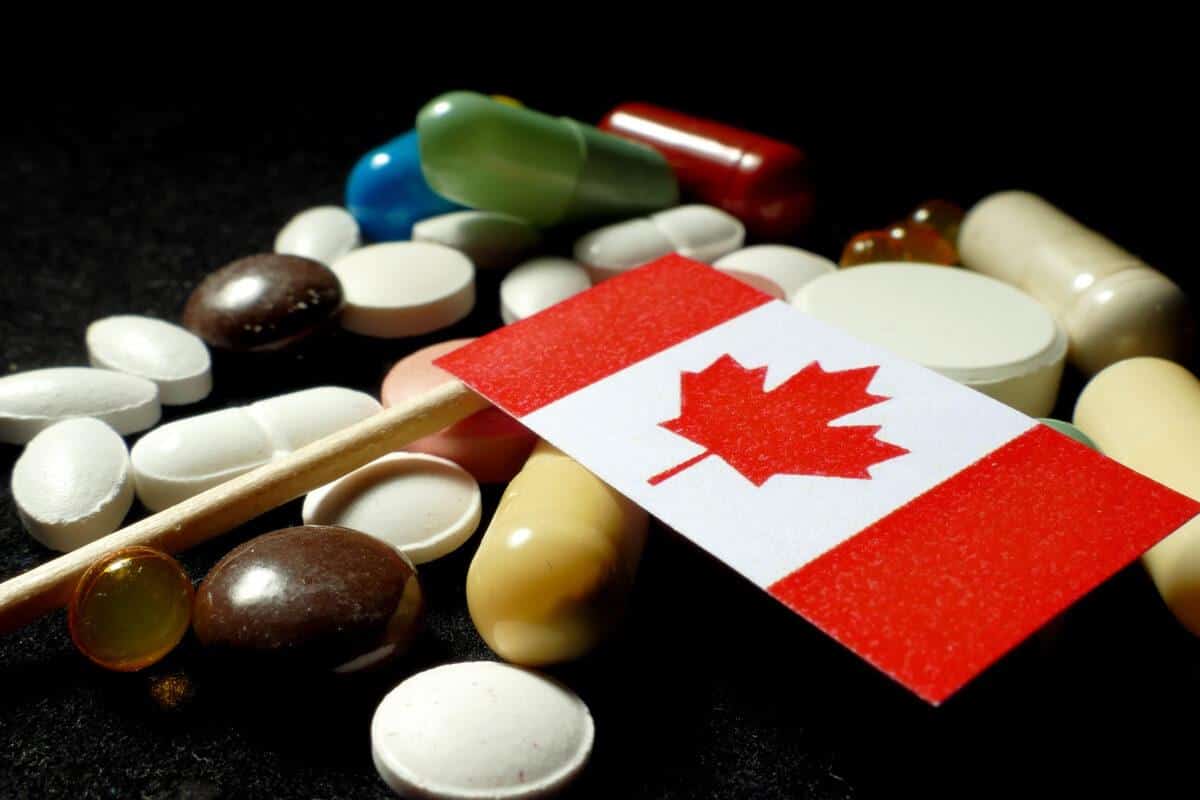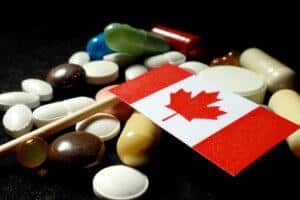 All marketed drugs and health products have benefits and risks. All health products are carefully evaluated before they are licensed in Canada. However, some adverse reactions or problems may become evident only after a product is in use by consumers. Reporting a suspected adverse reaction helps to identify potential safety issues and improve health product safety for all Canadians.
All marketed drugs and health products have benefits and risks. All health products are carefully evaluated before they are licensed in Canada. However, some adverse reactions or problems may become evident only after a product is in use by consumers. Reporting a suspected adverse reaction helps to identify potential safety issues and improve health product safety for all Canadians.
Every marketing authorization holder is required to report serious Adverse Reactions (AR) known to them involving their marketed health products, in accordance with the requirements of the Food and Drugs Act and the Regulations.
An Adverse Reaction is a noxious and unintended response to a drug taken at doses normally used, and is characterized by the fact that a causal relationship between the drug and the response is suspected. If the noxious and unintended response requires hospitalization, is life-threatening, or results in death, it is considered a Serious Adverse Reaction. Health professionals and consumers are also encouraged to report adverse reactions if they suspect an adverse event is related to a health product.
Every marketing authorization holder (MAH) should put into place written procedures for the receipt, evaluation, and reporting of ARs. Reporting of ARs electronically is the preferred and most reliable method for MAHs to comply with regulatory timelines.
Marketing authorization holders who do not yet meet the technical requirements to submit ARs electronically may continue to send AR reports to the Marketed Health Product Directorate (MHPD) by fax or postal mail. The regulatory reporting time clock is considered to start on the day when the MAH first receives all the information that satisfies the minimum criteria for an AR report. This date should be considered day ‘0’. The minimum criteria for an AR report includes the following components:
- An identifiable reporter (source)
- An identifiable patient
- A suspected health product
- An adverse reaction
Reporting Domestic Adverse Reaction
AR reports concerning reactions occurring in Canada, to a product that is marketed in Canada, are considered “domestic” AR reports.
In order to report in accordance with the Regulations, each MAH should report to MHPD within 15 calendar days of receiving the relevant information the following domestic reports:
- serious ARs
- unusual failure in efficacy reports for new drugs
Reporting Foreign Adverse Reaction Reports
Foreign AR reports are those concerning reactions occurring outside Canada to a product that is marketed in Canada.
In order to report in accordance with the Regulations, each MAH should report to MHPD within 15 calendar days of receiving the relevant information the following foreign reports:
- serious unexpected Adverse Reactions (An AR is considered ‘unexpected’ when its nature, severity or frequency is either not identified, or is not consistent with the terms or description used in the product labelling. In cases where the MAH is uncertain whether an AR is expected or unexpected, the AR should be treated as unexpected).
In addition, all foreign serious unexpected AR reports involving the MAH’s foreign products, with the same combination of active ingredients that is also marketed in Canada, must be reported to MHPD in accordance with the Regulations.
If you want to ensure you are in compliance with Canadian regulatory requirements with respect to reporting adverse reactions (ARs) to marketed health products, Quality Smart Solutions has a team of specialists who can assist you. Get prepared now and contact us today to discuss how we can be your solution!
Quality Smart Solutions is an end-to-end compliance solutions expert which has been assisting clients for 11 years in the areas of Dietary Supplements/NHPs, Foods, Cosmetics, Canna, Medical Devices, OTC drugs in Canada and the United States. Ask us for details or visit our website at www.qualitysmartsolutions.com.
FAQs
What counts as an Adverse Reaction (AR)?
An AR is any noxious, unintended response to a health product used at normal doses, where a causal relationship is suspected. If it leads to hospitalization, death, or is life-threatening, it’s deemed serious.
Who must report adverse reactions?
Marketing authorization holders (MAHs) are legally responsible for reporting all serious ARs they know of. Additionally, healthcare professionals and consumers are encouraged (though not legally required) to report suspected incidents .
What are the reporting timelines?
-
Domestic serious ARs: MAHs must report to Health Canada within 15 calendar days of gaining all required information.
-
Foreign serious unexpected ARs: Same 15-day window applies
What defines a foreign serious unexpected AR?
A foreign AR is “serious” and occurs to a product marketed in Canada, but the reaction’s nature, severity, or frequency is not described on the Canadian label. Such ARs are reportable within 15 days.
What minimum data must be included in a report?
Each AR report needs:
-
Reporter identity
-
Patient details
-
Suspected product
-
Description of the adverse reaction
Reporting time starts when all four are known.
How should reports be submitted?
Electronic submission is preferred and counts as timely. MAHs without electronic capability can use fax or mail, with clock starting on receipt of full info via any method.
Who receives these reports?
All ARs are submitted to Health Canada’s Canada Vigilance Program, managed by the Marketed Health Products Directorate (MHPD).
Are there different procedures for domestic vs. foreign ARs?
Yes. Domestic reports include any serious ARs and unusual efficacy failures. Foreign reports only include serious and unexpected ARs that align with Canadian marketed products.
What about post-market surveillance in Canada?
Adverse reaction reporting is a key component. Alongside spontaneous reporting, Health Canada uses line listings, narrative reports, and periodic summary submissions to track product safety.
What should MAHs do to stay compliant?
-
Establish written AR procedures
-
Monitor for and document ARs from all sources (consumers, HCPs, literature)
-
Report serious domestic ARs and foreign serious unexpected ARs within 15 days
-
Use electronic reporting where possible.
References
Reporting Adverse Reactions to Marketed Health Products – Guidance Document for Industry, Health Canada, 2018 https://www.canada.ca/en/health-canada/services/drugs-health-products/reports-publications/medeffect-canada/reporting-adverse-reactions-marketed-health-products-guidance-industry/guidance-document.html


 All drugs subject to the Food and Drug Regulations are required to gain premarket authorization prior to issuance of a Drug Identification Number (DIN). After gaining authorization to market a drug, a sponsor may for various reasons wish to make changes to the drug or the information associated with the drug. For those drugs regulated under Part C, Division 1 of the Regulations (“Old Drugs”) the sponsor must comply filing requirements for post-DIN changes when undertaking any changes.
All drugs subject to the Food and Drug Regulations are required to gain premarket authorization prior to issuance of a Drug Identification Number (DIN). After gaining authorization to market a drug, a sponsor may for various reasons wish to make changes to the drug or the information associated with the drug. For those drugs regulated under Part C, Division 1 of the Regulations (“Old Drugs”) the sponsor must comply filing requirements for post-DIN changes when undertaking any changes.
 When Health Canada authorizes a drug to be marketed in Canada, a Drug Identification Number (DIN) is issued to the manufacturer and must be printed on the package labels. A DIN indicates that the evaluation of the drug determined that it met the relevant requirements of the Food and Drugs Act and its regulations, and the drug has a favourable risk/benefit profile. Manufacturers of prescription and non-prescription drugs must obtain a DIN before they are marketed in Canada. The DIN assigned to a drug is unique and serves as a tool to help in the post-market activities of products on the market, such as product identification and verification by health care professionals, recall of products, inspections, and quality monitoring. While the authorization of a drug includes the issuance of a DIN to the manufacturer, the DIN is the property of Health Canada.
When Health Canada authorizes a drug to be marketed in Canada, a Drug Identification Number (DIN) is issued to the manufacturer and must be printed on the package labels. A DIN indicates that the evaluation of the drug determined that it met the relevant requirements of the Food and Drugs Act and its regulations, and the drug has a favourable risk/benefit profile. Manufacturers of prescription and non-prescription drugs must obtain a DIN before they are marketed in Canada. The DIN assigned to a drug is unique and serves as a tool to help in the post-market activities of products on the market, such as product identification and verification by health care professionals, recall of products, inspections, and quality monitoring. While the authorization of a drug includes the issuance of a DIN to the manufacturer, the DIN is the property of Health Canada.
 The label and package are the first points of interaction between a health product and a consumer. Prior to the implementation of the Plain Language Labelling (PLL) initiative, the general practice in Canada was to present key information within blocks of text on the product label. This sometimes made it difficult for the consumer to easily identify information necessary for appropriate selection and proper use of the product. In some cases, the information appeared in small type, with poor contrast between the label text and the background. All of these factors can prevent the consumer from finding the information needed to make informed purchasing decisions in a timely manner.
The label and package are the first points of interaction between a health product and a consumer. Prior to the implementation of the Plain Language Labelling (PLL) initiative, the general practice in Canada was to present key information within blocks of text on the product label. This sometimes made it difficult for the consumer to easily identify information necessary for appropriate selection and proper use of the product. In some cases, the information appeared in small type, with poor contrast between the label text and the background. All of these factors can prevent the consumer from finding the information needed to make informed purchasing decisions in a timely manner.
 In continuation to the last article on Canadian legislations and requirements regarding the marketing of drugs and medical devices, this article will discuss some of the specific requirements concerning the advertising of health products towards consumers. The overriding principle lies within the Canadian Food and Drugs Act, which prohibits health product advertising which is false, misleading or deceptive, or is likely to create an erroneous impression regarding its character, value, quantity, composition, merit or safety. Health product advertising is any consumer-directed advertising of health products, including nonprescription drugs, natural health products, medical devices and vaccines, in all Canadian media. Canadian “media” include, but are not limited to: television, radio, mass print, billboards, transit, in-store promotional materials, direct mail, websites, e-mail, mobile, and social media. Here are some of the common items to watch out for:
In continuation to the last article on Canadian legislations and requirements regarding the marketing of drugs and medical devices, this article will discuss some of the specific requirements concerning the advertising of health products towards consumers. The overriding principle lies within the Canadian Food and Drugs Act, which prohibits health product advertising which is false, misleading or deceptive, or is likely to create an erroneous impression regarding its character, value, quantity, composition, merit or safety. Health product advertising is any consumer-directed advertising of health products, including nonprescription drugs, natural health products, medical devices and vaccines, in all Canadian media. Canadian “media” include, but are not limited to: television, radio, mass print, billboards, transit, in-store promotional materials, direct mail, websites, e-mail, mobile, and social media. Here are some of the common items to watch out for:
 Health Canada is not only the national regulatory authority for issuing health product marketing authorizations, but it also oversees and enforces the regulatory requirements related to health product advertising. While smart marketing strategies are important for driving sales, it is also crucial to ensure those strategies comply with Canadian legislative and regulatory requirements.
Health Canada is not only the national regulatory authority for issuing health product marketing authorizations, but it also oversees and enforces the regulatory requirements related to health product advertising. While smart marketing strategies are important for driving sales, it is also crucial to ensure those strategies comply with Canadian legislative and regulatory requirements. 